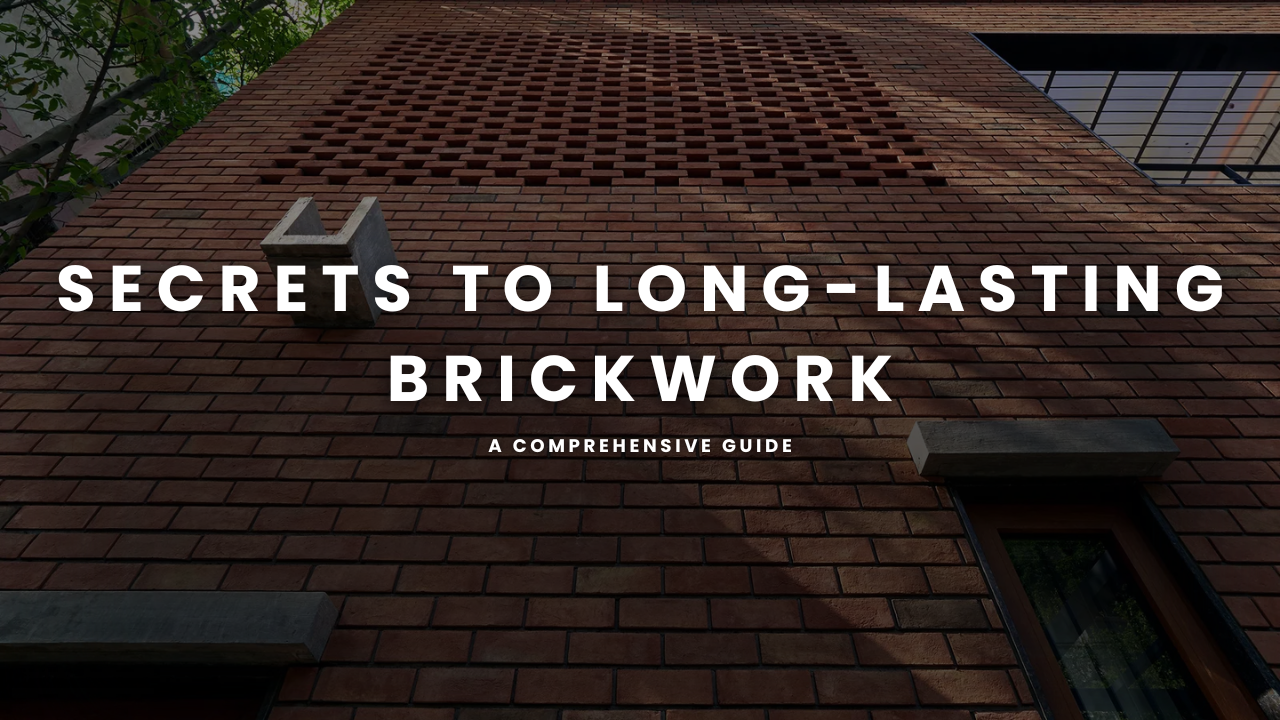Brickwork is not an easy task as it looks. I believe that it’s more than just playing bricks on each other, it’s more than that, it’s an ART.. If the brickwork is done correctly in any building or construction it can last for centuries. The most famous example of Long-Lasting Brickwork is the Great Wall of China which is over 13000 miles long and was built using a mixture of bricks wood, and stones.
Whether you are making your house or restoring old walls it is crucial to understand the secret of long-lasting brickwork to make it last longer. If you want to learn more about maintaining your brick structures today then this guide will provide essential tips key insights and best practices to help you achieve a great brickwork that can stay for centuries..
The Basics of Brickwork
Before going into the depth of the secret sauce of brickwork we must clear the basics, right? Bricks are one of the oldest building materials that have been used since the ancient times. Their durability, thermal efficiency, and aesthetic appeal are what people love and have been popular in the field of construction.
There are four basic compounds of brickwork mentioned below.
- Bricks – In the market there are different types of bricks made with different materials such as clay, concrete, and fly ash. Each type has its unique properties and benefits.
- Mortar – The motor is nothing but a mixture of cement sand and water that helps break to stick to each other. ..
- Bonding – There are many different types of patterns when it comes to the brickwork We call them bonding. Some common bonds include the structure bond, English bond, and header bond.
- Joints – Joints are nothing but the gaps between bricks which is then filled with motors. Proper joints are crucial for the strength and weather resistance of any brickwork.
Secrets to Long-Lasting Brickwork
Quality Materials
When building any construction you must ensure that you are using high quality materials to make your foundation long lasting. Not just that but also you have to make sure that you are using well baked bricks with no cracks in it. After getting the best quality of brick now its time for the motor, a good quality motor insurance a strong bonding of bricks.
Proper Mortar Mix
The most common mistake that many of the constructors make is to add too much water to the motor which can lead to a weakened bond in the structure. A thamb rule is to use a mix ratio of 1:3 (Cement to Sand). If the structure is in a harsh weather area, you can consider choosing a motor mix that includes lime in it.
Correct Bonding
The way the bricks are bonded together can impact the strength of the overall structure. The stretcher bond where bricks are laid lengthwise in a stag pattern is popular for its strength and simplicity. However to get thicker walls the English bond which is an alternative between structures and headers offers superior strength to any structure.
Stretcher Bond vs. English Bond
| Feature | Stretcher Bond | English Bond |
| Strength | Moderate | High |
| Aesthetics | Simple and modern | Traditional and robust |
| Ease of Construction | Easy | More complex |
| Common Usage | Thin walls, facades | Thick walls, load-bearing |
Proper Jointing
Joints also play a crucial role in protecting the brickwork from all types of weather. There are types of jointings mentioned below.
Flush Joint – the motor is level with the brick. It is easy to achieve but less effective against water infiltration.
Recessed Joint – here the motor is set back slightly from the brick face. This type of joint is more water resistant and gives a shadow effect.
Weatherstruck joint – In this the motor is angled downward providing excellent water runoff.
Weather Protection
As you know brickwork is generally exposed to all the natural elements and over time water can be its bigger enemy to prevent this we can do the following things.
Use water-repellent treatments – You can apply a water-repellent sealant that can protect the brickwork from moisture while allowing the wall to breathe.
Proper drainage – make sure that there is adequate drainage around the brickwork to prevent water from pooling and seeping into the structure.
Copying and flashing – install copying on parapet walls and flushing in areas where the brickwork meets other materials to direct water away from the structure..
Regular Maintenance
Last but not least, regular maintenance is also essential to make sure that your brickwork lasts longer. You can regularly inspect your brickwork for signs of wear such as cracks, mortar deterioration, or efflorescence. If you see any of this, You might have to renew the motor joints to keep the structure intact.
Common Brickwork Issues and Solutions
| Issue | Cause | Solution |
| Cracks | Settling, thermal expansion | Repointing, structural assessment |
| Efflorescence | Water infiltration | Improve drainage, apply sealant |
| Mortar Deterioration | Poor quality mortar, weathering | Repointing, use of better mortar mix |
Conclusion
For making a long-lasting brickwork is both a science and an art. By choosing the right materials applying the correct technique and committing to regular maintenance you can ensure that your big structure sends the taste of time. Whether you are a DIY enthusiast or working with a professional the principal outline in this guide I hope it has helped you to get durable and beautiful big work.
Also Read:

